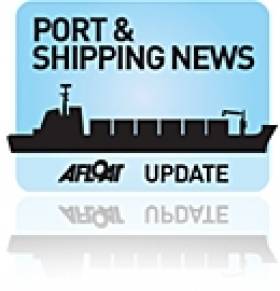Displaying items by tag: Vessel Incidents
Overheating Ship's Cargo Hold and Oil Spill Incidents at Warrenpoint
#Vesselincidents - Within a fortnight two separate incidents involving a pair of vessels berthed in Warrenpoint, took place at the Co. Down port on the shore of Carlingford Lough.
Last week, overheating of cargo on board a hold of the M.V. Cimbris was detected by the vessel's captain who informed Warrenpoint Harbour Authority (WHA) which requested the fire brigade service.
The port authority implemented their emergency response plan and several units from the Northern Ireland Fire and Rescue Service were dispatched to the Cimbris which had arrived from Riga.
Peter Conway, CEO of the port authority confirmed that of the 3,000 tonnes of animal feed, 2000 tonnes had already been discharged prior to the incident on board the vessel whose berth was cordoned off for safety reasons.
Commenting on the incident, "I wish also to compliment the speed with which the emergency services responded to this incident".
The second incident as previously reported on Afloat.ie, had involved a small discharge of marine fuel from a vessel berthed at the port on 22 October.
The fuel was detected on the water's surface by the ship's captain who informed WHA which led to the port activating their oil contingency plan.
A team trained in oil spill recovery put in place around the vessel oil spill booms in addition to securing the affected area through the deployment of absorbent pads.
With a rising tide some oil had been detected along the shore adjacent to Narrow Water, the area was subsequently cleaned and oil residue removed as part of the port's contingency plan.
The Northern Ireland Environmental Agency, the Department of the Environment, Newry and Mourne District Council, the Loughs Agency and other agencies were informed. They assisted Warrenpoint Harbour in the remediation of the shore line at this location.
An investigation into the spill was instigated to determine the cause of the incident.





























































